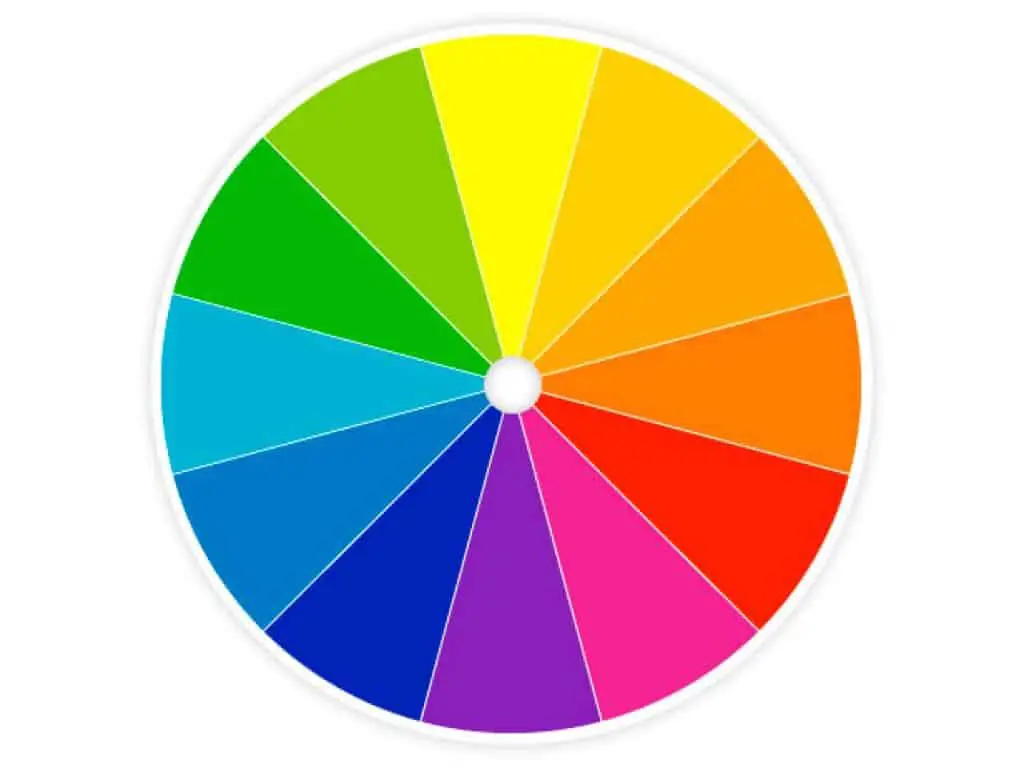The color wheel is a visual representation of color theory that shows the relationships between primary, secondary, and tertiary colors. Understanding the 12 colors of the color wheel is essential for artists, designers, and anyone who works with color. In this article, we will answer the question “What are the 12 colors in the color wheel?” by exploring the history of the color wheel, how it is organized, and the characteristics of each of the 12 colors.
A Brief History of the Color Wheel
The origins of the color wheel can be traced back to the early theories of Isaac Newton in the 17th century. Newton associated each color with a musical note and believed the arrangement of colors was similar to the chromatic musical scale. In the 18th century, Moses Harris created one of the first circular diagrams showing the relationships between primary, secondary, and tertiary colors.
In the early 19th century, Johann Wolfgang von Goethe studied the physiological effects of color and developed a symmetric color wheel with six primary and secondary colors. Later, Philipp Otto Runge expanded on this by adding the missing tertiary colors to create a 12-section color wheel. The most common modern version is attributed to Albert H. Munsell in the early 20th century. His color system served as the foundation for many color order systems used today.
Structure of the Color Wheel
The modern 12-color wheel consists of three sets of colors:
Primary colors – Red, yellow, blue. These are colors that cannot be mixed from other colors. All other colors are derived from these three hues.
Secondary colors – Green, orange, violet. These are created by mixing two adjacent primary colors. For example, red and yellow make orange.
Tertiary colors – Yellow-orange, red-orange, red-violet, blue-violet, blue-green, yellow-green. These are created by mixing a primary color with an adjacent secondary color in equal parts. For example, red and violet make red-violet.
The color wheel displays these 12 colors in an evenly spaced circular arrangement to demonstrate the relationships and transitions between them. Complementary colors sit directly across from each other.
The 12 Colors of the Color Wheel
Now let’s take a closer look at each of the 12 colors that make up the traditional color wheel, starting with the 3 primary colors:
1. Red
Red sits at 0° on the color wheel. It is considered a warm and energetic color. It is associated with passion, excitement, intensity, and stimulation.
2. Yellow
Yellow sits at 60° and is the most luminous and brightest of the primary colors. It represents happiness, positivity, clarity, energy, and warmth.
3. Blue
Blue sits at 240° and is considered a cool, calming color. It is often associated with stability, harmony, productivity, and relaxation.
The 3 secondary colors are:
4. Orange
Orange sits between red and yellow at 30° and combines the energy of red and the cheerfulness of yellow. It represents enthusiasm, creativity, and determination.
5. Green
Green sits between yellow and blue at 120°. It is considered a cool, refreshing color and represents balance, growth, environmental awareness, and renewal.
6. Violet
Violet sits between blue and red at 300° and combines the stability of blue with the energy of red. It is associated with nobility, spirituality, and mystery.
Finally, the 6 tertiary colors complete the 12-color wheel:
7. Yellow-orange
Yellow-orange sits between yellow and orange at 45° and represents cheerfulness, playfulness, and warmth.
8. Red-orange
Red-orange sits between red and orange at 15° and combines the passion of red with the vibrancy of orange. It represents excitement, boldness, and adventure.
9. Red-violet
Red-violet sits between red and violet at 315° and is an expressive, sentimental color that represents passion with sophistication.
10. Blue-violet
Blue-violet sits between blue and violet at 285° and evokes qualities of compassion, mystery, and spirituality.
11. Blue-green
Blue-green sits between blue and green at 195° and represents harmony, healing, tranquility, and balance.
12. Yellow-green
Yellow-green sits between yellow and green at 90° and combines the cheerful qualities of yellow with the natural qualities of green. It represents growth, freshness, and renewal.
Color Wheel Memorization Tips
Here are some useful tips to help memorize the 12 colors of the color wheel:
– Learn the order of the colors starting with primary, secondary, then tertiary colors.
– Use acronyms like Roy G. Biv (red, orange, yellow, green, blue, indigo, violet).
– Associate colors with common objects – for example, red as a fire engine, yellow as a lemon, green as grass.
– Visualize the color wheel and test yourself by naming colors at different degrees/locations.
– Use memory techniques like creating stories, songs, or rhymes with the color names.
– Practice mixing colors to reinforce which primaries make up the secondaries and tertiaries.
Uses of the Color Wheel
Understanding the 12 colors of the color wheel allows artists, designers, and other creatives to:
– Predict color mixtures and harmonies. The color wheel shows how colors blend and interact.
– Select color schemes. Colors can be selected according to complementary, analogous, triadic, and other harmonious relationships.
– Visualize contrasts and transitions between colors. The wheel shows how hues naturally flow into one another.
– Understand color psychology and symbolism. Each color has associations that evoke different emotions and meanings.
– Communicate design ideas more clearly. The color wheel provides a common framework and vocabulary around color.
– Evaluate the use of color objectively. The wheel provides principles for creating color balance and unity.
Conclusion
The 12-color wheel remains an indispensable tool for working with color across many disciplines. Memorizing the primary, secondary, and tertiary colors along with their positions on the wheel provides a strong foundation for applying color theory. From the vibrant red to the tranquil blue-green, the 12 colors offer a rich palette for any creative endeavor. Whether you are an artist, designer, photographer or simply interested in color, understanding these 12 hues is essential for unlocking the full expressive power of color.


